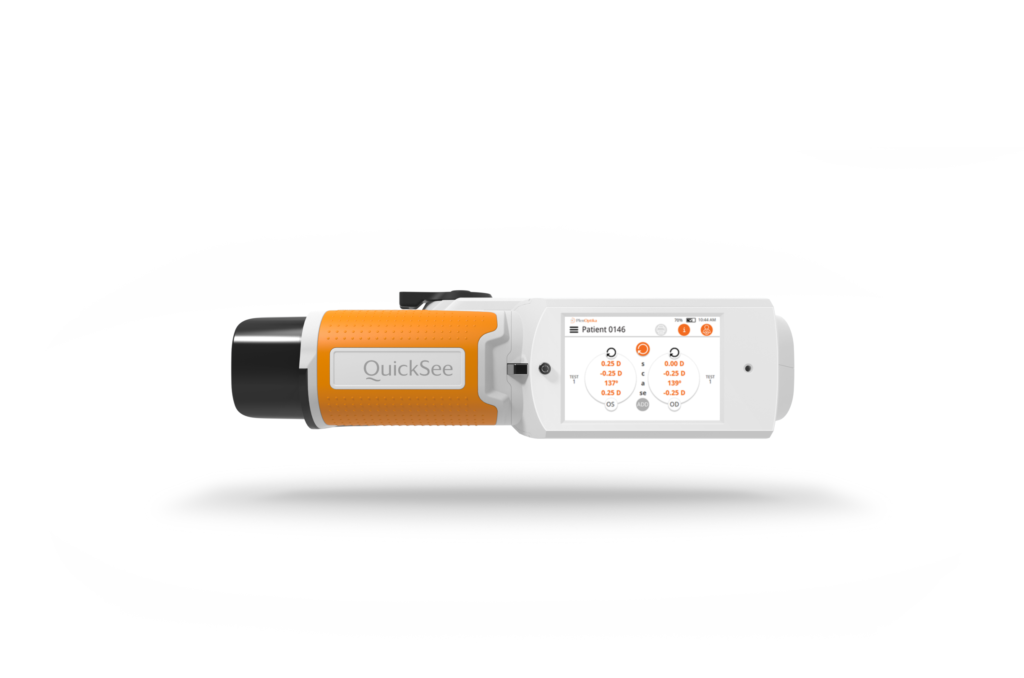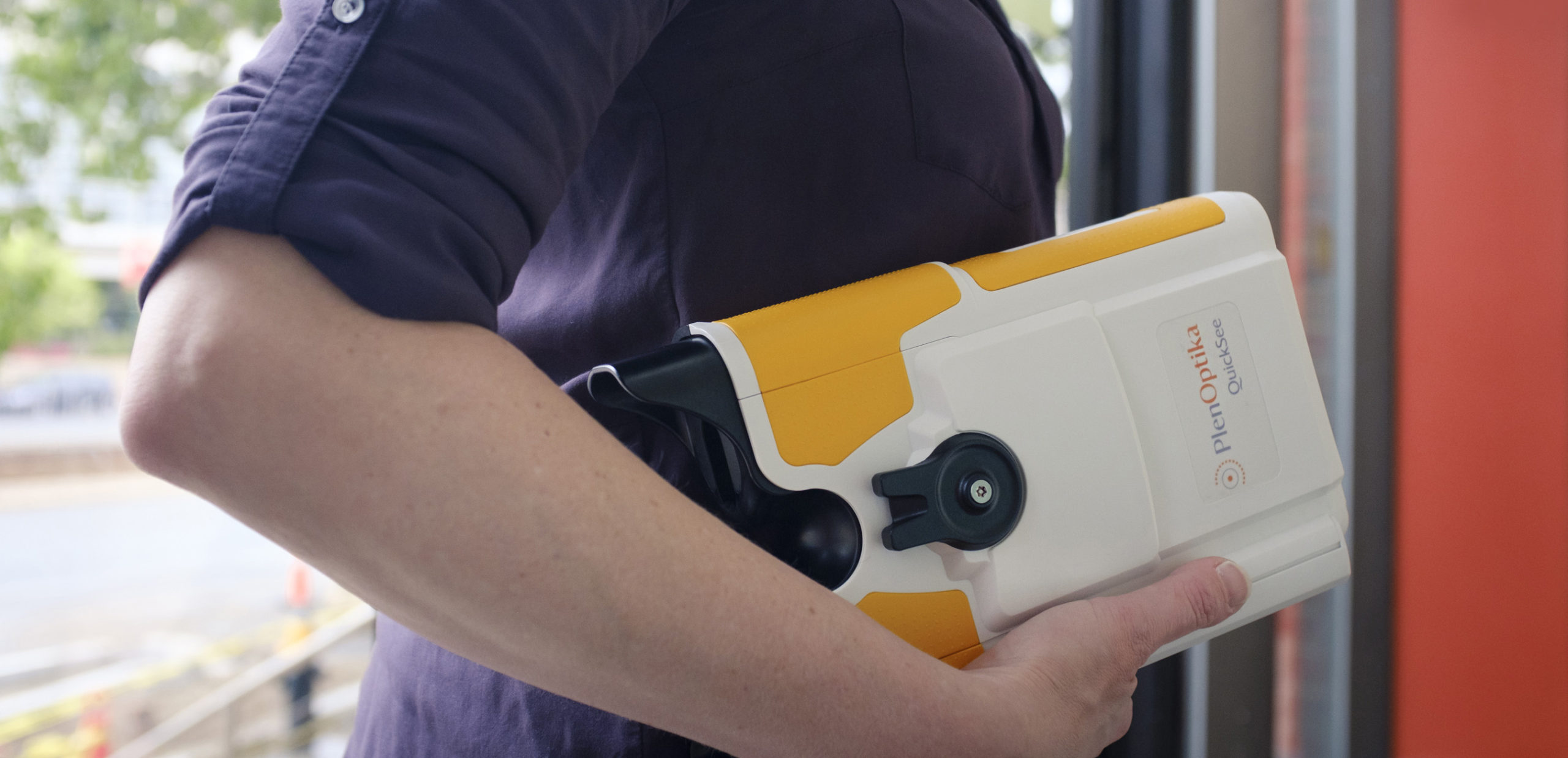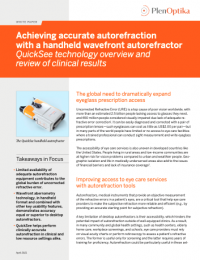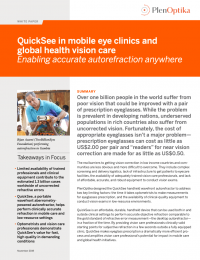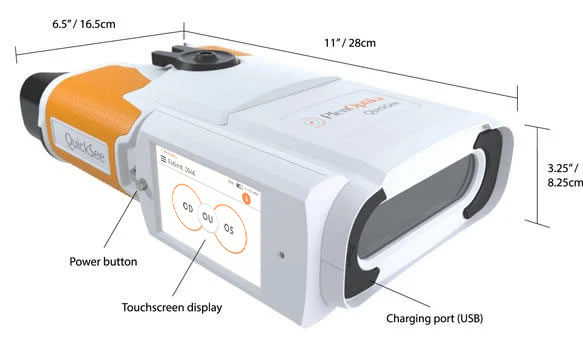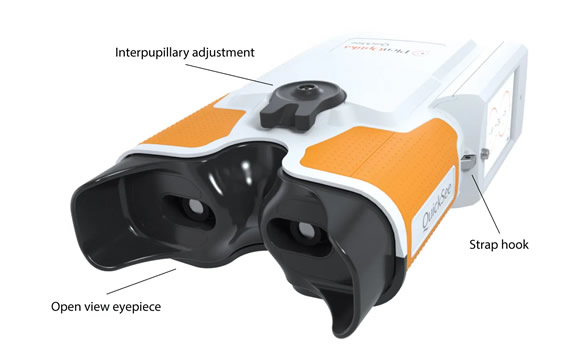How QuickSee works
Key features
Binocular and open view
Reduces patient accommodation for more reliable measurements
Wavefront aberrometry
Provides the most comprehensive method to measure ocular aberrations and refractive errors
Dynamic measurements
Produces results with high confidence
QuickSee’s combination of the open view binocular design, wavefront aberrometry, and dynamic measurements produces clinically accurate autorefraction measurements, in a durable handheld format suitable for use in clinics and in the field.
The patented PlenOptika Wavefront Refraction Engine™ performs continuous data analysis to precisely determine low-order refractive errors, making QuickSee as accurate as the high-end clinical desktop autorefractors and demonstrating excellent agreement with subjective refraction.
The technology inside QuickSee has been clinically-evaluated in five IRB-based studies and documented in seven peer-reviewed publications and conference abstracts. QuickSee has FDA Class I 510(k) exempt medical device registration.
QuickSee delivers binocular measurements that agree strongly with subjective refraction in 10 seconds
QuickSee technology and applications in mobile care
These PDFs explain how QuickSee technology achieves accurate autorefraction anywhere, and shares results from seven peer-reviewed clinical study reports.
